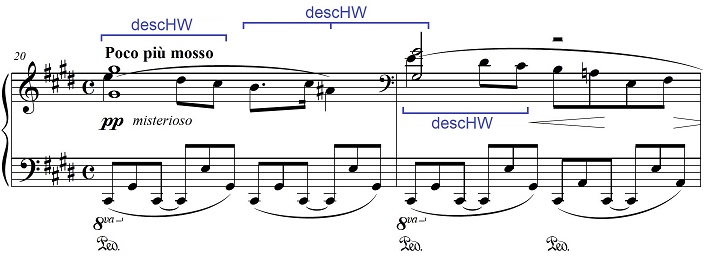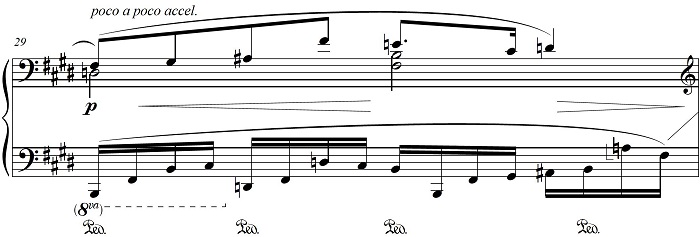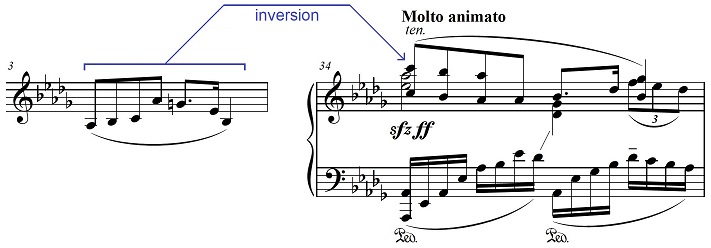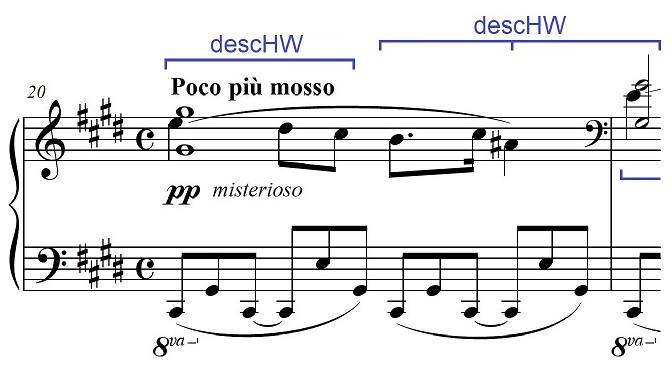Compositional Process: The Melody of Life (Part 3)
My last two blog posts (Part 1 and Part 2 of this series) have been describing the process by which I composed my Nocturne No. 2 for Piano, a work which has proven very popular with listeners. Because of the circumstances under which it was written, I subtitled the piece “Passionate Melody of Life,” and the previous posts analyzed its principal melody, which I think of as representing life. The basic building blocks of that melody, it was shown, are three-note linear sequences, or “3-lines” for short. In particular, the principal melody begins with a 3-line rising by whole steps (ascWW) from scale degree 5, and it concludes with a mirroring 3-line descending by whole steps (descWW) to scale degree 1.
The piece is in D-flat major and is in ABA form. The B section begins in the (enharmonic) parallel minor, which is C-sharp minor. For aesthetic reasons, I prefer that even the contrasting sections of a piece should relate to one another in some way, ideally by drawing upon closely related constituent materials, thus conferring the sense that the work is an organically unified whole despite the contrasts. The B section of this nocturne starts with a secondary melody, which like the melody from the main A section is built from 3-lines. Where the principal melody opened with an ascent by whole steps (ascWW), the basic building block of the secondary melody is a 3-line descending by a half step followed by a whole step (descHW).

The B section begins at measure 20, around 2:05 in the video at the end of this post. This central section displays the relative tonal restlessness that one might associate with a development section. From C-sharp minor, it proceeds by descending thirds through harmonic centers of A major, F-sharp minor, and D major to B minor at m. 29, where the contrasting melodic and rhythmic shape of the principal theme’s first phrase reappears.

From there the piece builds to a dramatic climax at m. 34, marked Molto animato. The shape of the principal theme’s first phrase is inverted at this climax.

The Molto animato recedes from this climax over four measures, leading into the final A section.
Part 4 will conclude this series by showing show how the 3-lines from the two melodies are brought together in a most remarkable way in the piece’s coda.


Fascinating and very instructive a composer who explains his journey and dissects his work.
He takes us into his process of composing the work.
Thank you so much
French:
Passionnant et très instructif un compositeur qui explique son cheminement et décortique son oeuvre.
Il nous fait pénétrer dans son processus de composition de l’oeuvre.
Merci infiniment